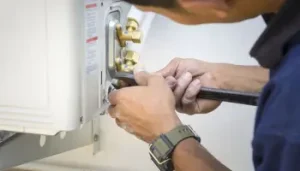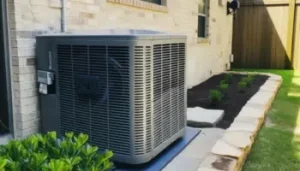Introduction to HVAC Zoning Systems
HVAC zoning systems are a highly effective solution for optimal home comfort and energy efficiency. Unlike traditional HVAC systems that treat the entire home as a single zone, zoning systems divide your home into multiple zones, each with its thermostat. This allows for precise temperature control in different areas of your home, enhancing comfort and reducing energy consumption.
In this blog, we will introduce the concept of HVAC zoning systems, explore their benefits, and provide tips for installation and use. Understanding how zoning works allows you to make informed decisions to maximize your home’s comfort and efficiency.
How HVAC Zoning Systems Work
HVAC zoning systems use a series of dampers installed in the ductwork of your home. These dampers can open and close to direct airflow to specific zones as needed. Each zone has its thermostat, which communicates with a central control panel. When a thermostat in a particular zone calls for heating or cooling, the control panel activates the HVAC system and adjusts the dampers to deliver conditioned air to that zone.
Key Components of Zoning Systems
Thermostats: Each zone has its thermostat, allowing independent temperature control.
Dampers: Installed in the ductwork, dampers open and close to control airflow to each zone.
Control Panel: The central unit receives signals from thermostats and adjusts the dampers and HVAC system accordingly.
Zone Sensors: Optional sensors that can monitor temperature and humidity in different areas, enhancing control.
Advantages of HVAC Zoning Systems
1. Enhanced Comfort
One of the most significant benefits of HVAC zoning systems is the enhanced comfort they provide. Different areas of your home may have varying temperature needs. For instance, bedrooms might be more comfortable at cooler temperatures, while living areas might require more warmth. Zoning allows you to customize temperatures in each zone to suit individual preferences, ensuring that every part of your home is comfortable.
2. Improved Energy Efficiency
Zoning systems can significantly improve energy efficiency by reducing the workload on your HVAC system. Instead of heating or cooling the entire home to achieve the desired temperature in one area, zoning allows you to condition only the zones that need it. This targeted approach reduces energy consumption and can lead to substantial savings on utility bills.
3. Reduced Wear and Tear
By optimizing the operation of your HVAC system, zoning reduces wear and tear on the system’s components. When only certain zones need conditioning, the system doesn’t have to work as hard or as often, extending the lifespan of your equipment and reducing maintenance costs.
4. Personalized Comfort for Different Areas
Zoning is particularly beneficial for homes with diverse usage patterns. For example, a home office might need more cooling during the day, while bedrooms might need more heating at night. Zoning systems accommodate these varying needs, providing personalized comfort for different areas and times of the day.
5. Quieter Operation
Since zoning allows the HVAC system to operate more efficiently and less frequently, it often results in quieter operation. The system doesn’t need to run at full capacity all the time, reducing noise levels and contributing to a more peaceful home environment.
Tips for Installing and Using Zoning Systems
1. Assess Your Home’s Layout
Before installing a zoning system, assess your home’s layout and identify areas with different heating and cooling needs. Common zones include bedrooms, living areas, kitchens, and home offices. Consult a professional HVAC contractor to determine the best way to divide your home into zones.
2. Choose the Right Thermostat
Select thermostats that offer the features you need for each zone. Programmable thermostats allow you to set schedules for different zones, ensuring optimal comfort and energy savings. Smart thermostats offer advanced features like remote control, learning capabilities, and integration with home automation systems.
3. Ensure Proper Damper Installation
Proper damper installation is crucial for effective zoning. Dampers should be installed in accessible maintenance locations and correctly sized for your ductwork. Professional installation ensures that dampers operate efficiently and don’t restrict airflow when open.
4. Optimize Control Panel Settings
The control panel is the brain of your zoning system. Ensure it is properly configured to manage the thermostats and dampers effectively. Some control panels offer advanced features like variable fan speed control and humidity management, which can further enhance comfort and efficiency.
5. Regular Maintenance
Regular maintenance is essential to keep your zoning system operating efficiently. This includes checking and cleaning dampers, calibrating thermostats, and correctly ensuring the control panel functions. Annual professional inspections can identify and address any issues before they affect your system’s performance.
6. Monitor and Adjust Settings
Once your zoning system is installed, monitor its performance and adjust settings. Pay attention to the comfort levels in different zones and adjust thermostat settings or damper positions to optimize comfort and efficiency. Smart thermostats, with remote monitoring and control capabilities, can make this process easier.
Common Challenges and Solutions
1. Inconsistent Temperatures
Inconsistent temperatures can occur if dampers are not properly balanced or if the ductwork is not working properly. Ensure that dampers are correctly installed and balanced to provide even airflow to each zone. A professional HVAC technician can help diagnose and resolve these issues.
2. Complex Installation
Installing a zoning system can be complex, especially in older homes with existing ductwork. Working with an experienced HVAC contractor can ensure a smooth installation process and help overcome any challenges related to your home’s layout or existing system.
3. Cost Considerations
While zoning systems offer long-term energy savings, the initial installation cost can be significant. However, the investment is often worthwhile due to your HVAC system’s enhanced comfort, reduced energy bills, and extended lifespan. Consider the long-term benefits when evaluating the cost.
Conclusion
HVAC zoning systems are powerful for enhancing home comfort and energy efficiency. By dividing your home into multiple zones, you can customize temperatures to suit different areas and usage patterns, improving comfort and reducing energy consumption. While some challenges are associated with installation and initial costs, the long-term benefits make zoning systems a valuable investment.
At Diamond Heating & Cooling, we specialize in installing and maintaining HVAC zoning systems. Our expert technicians can help you design and implement a zoning system that meets your needs, ensuring optimal comfort and efficiency. Contact us today to learn how zoning systems can transform your home’s HVAC performance.



